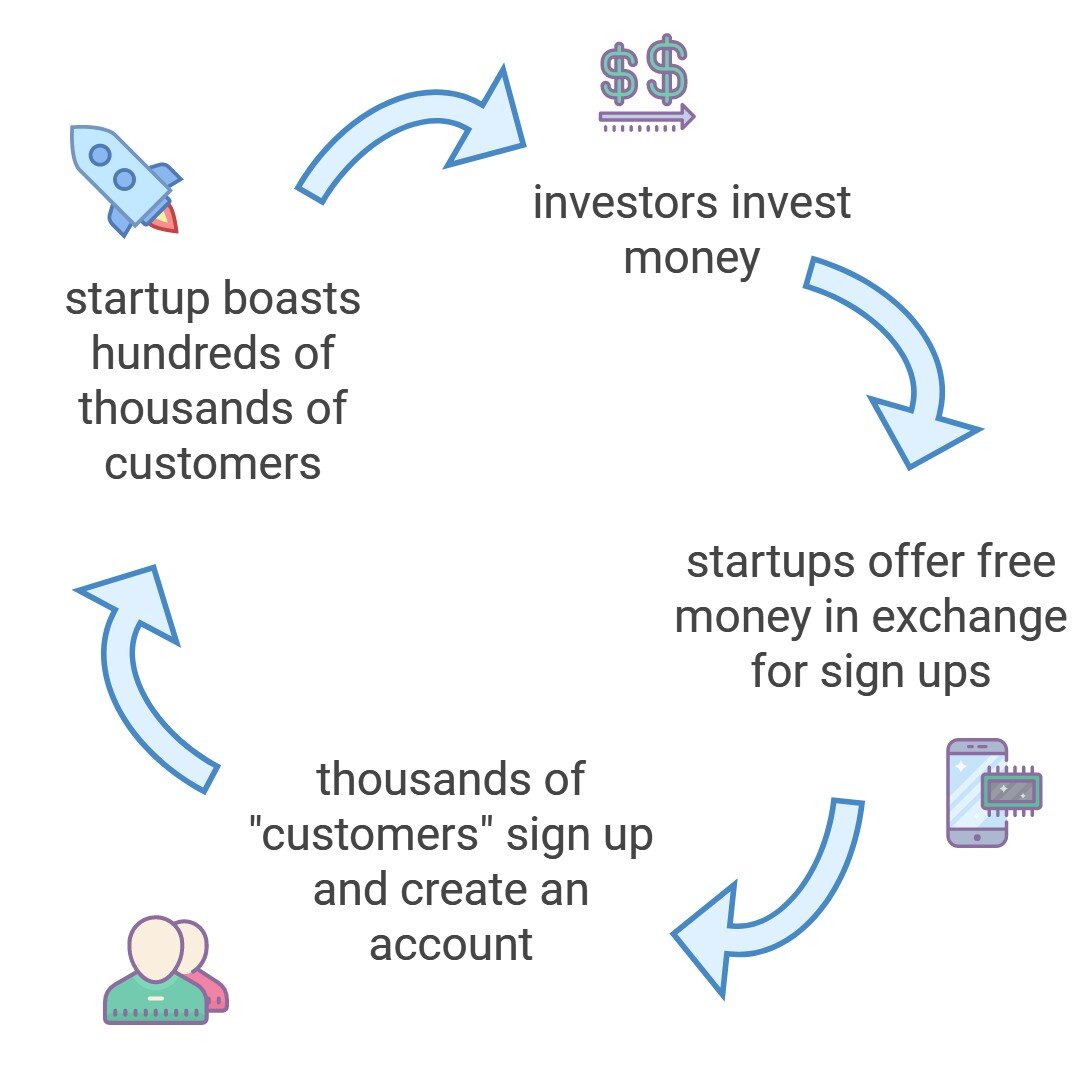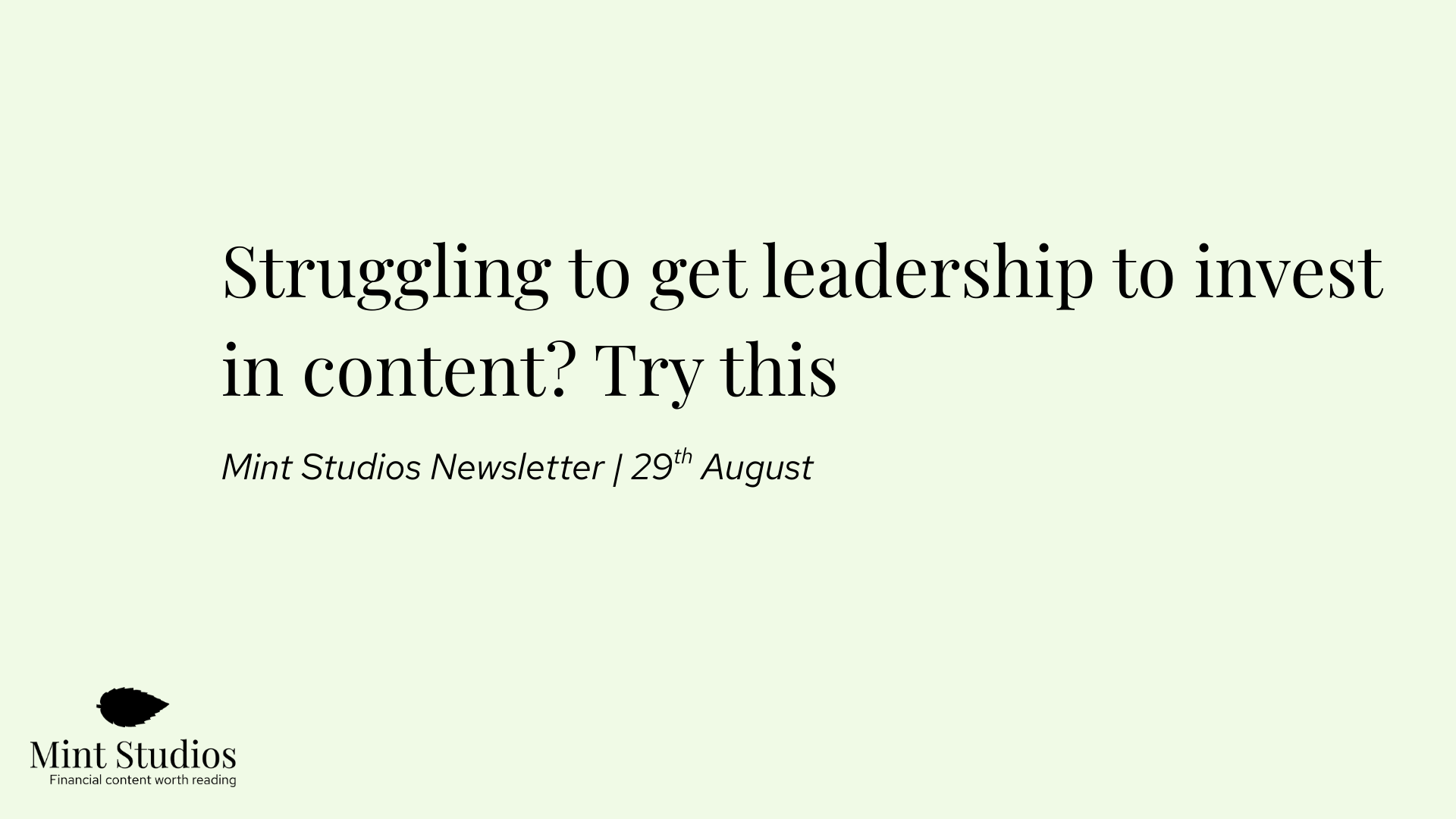Offering free money to customers who sign up has been a popular marketing strategy for decades.
Nowadays, startups of all shapes and sizes are implementing this marketing strategy as an easy way to acquire customers quickly. Many of these startups are already loss making, and now with this strategy, are losing money on every transaction. Is this marketing strategy sustainable? Where are these companies getting all this “free money”? At what point should a company use this strategy?
I interviewed Thish De Zoysa, founder of Fintech and Retailtech Their Perfect Gift, to find out more about this topic. Anyone who follows him on LinkedIn knows how vocal he is on this very issue, so I thought he would be the perfect candidate to dive a little deeper.
Thish is an accountant with more than 20 years of experience in the corporate world. He’s the founder of Their Perfect Gift, a startup that issues “spend everywhere” gift cards. Here’s what we covered in the interview.
What is the “free money strategy”?
Put simply, the “free money strategy” consists of offering customers a monetary reward when they sign up or create an account with said company.
The free money strategy is popular in the Fintech industry because many companies are managing the money for their customers - whether it’s micro-investments, current accounts or cash back. But it’s been a popular strategy for decades, with many traditional banks offering large rewards to customers just so they join that specific bank (NatWest currently offers £100!). Since banking customers are expensive to acquire, this makes sense as a marketing strategy for large incumbents.
But what about Fintechs? Or startups in general? How can they afford to offer free money to customers? Thish explains that there are only three places companies can get this “free money” from:
- Retained earnings
- Debt
- Investors
Startups can’t obtain the money from retained earnings, since they aren’t even profitable. Definitely not debt, since no one lends to them. We’re left with: investors. The money has to come from somewhere, so it comes from VCs, angel investors and private investors.
This creates an interesting loop: investors invest money into a cool Fintech startup, the startup offers free money to customers in exchange for signups, thousands sign up to receive £5… and then? Then the startup can boast that it’s got hundreds of thousands of customers and therefore get, you guessed it: more funding.
Here’s a quick pic of what I mean:

Thish is quick to say that he’s not saying there is anything wrong with the strategy itself. What we’re asking is: is this a real business? What’s the real product here, the customer or the app? Are we selling “the number of customers we have” or are we selling “ a real, valuable product”? Good question...
Is this sustainable?
The main issue, Thish says, is that someone who downloads your company app to receive free money and then never uses your app again is not a real customer. Can companies really expect loyalty just be giving customers free money? As Thish says: what are you, a charity?
How are these companies planning on making money? Thish explains that business model is the following:
“My product is X and I pay people to use X, but I’m losing money. Once I have people in the door, I sell them Y - which does make me money. But Y was never my core product”
Y, you guessed it, is usually advertising. The question then is: what am I? A bank (or banking solution) or a publisher? What is the main product, who are the real customers, and are we really gaining value from this company product X?
I countered Thish by saying that I definitely love my bank, Starling bank. I use two of their products everyday and some may call me a Starling brand evangelist. Surely Starling is adding value to my life? Thish believes that a real customer is one who is paying - this means they value your product and are committing to it every month/year. And if you’re not paying, would you be willing to pay for this service? Even if it’s £1 per year, would you be willing to pay it? If the answer is yes, you are a real customer. If not, you aren’t. 🤷♀️
The perfect example to illustrate this is Whatsapp. In 2013, they charged every new customer $1 PER YEAR. A tiny amount. And yet their customer base dropped significantly just from that small change (also because many customers in developing countries do not have credit cards). Charging money seriously harmed their growth.
The main reason we discussed this with Thish is that it’s important to be aware that at the end of the day, this is all a numbers game. The more customers you acquire, the more numbers you can show off and the more investors want to give you their money. It’s a never ending cycle.
The real question is: is it sustainable? Is all this a pyramid scheme that will one day collapse? Or a bubble that will burst? When it comes to Fintech, both Thish and Fintech thought leader Chris Skinner seem to agree: the wind will come out slowly and there won’t be a sudden burst.
In his book Doing Digital, Skinner explains that Fintech won’t burst because it’s making boring old banking better and it’s also serving people who weren’t served by banks, which means there’s still a lot of room to grow. The prediction is that Fintechs and Big Tech will focus on profitable banking solutions, such as loans and credit, leaving the big banks with the expensive products, such as deposits. What will happen then? Big banks will have to start charging fees for checking accounts and deposits. This will create a new sector of unbanked customers, who will then go back to the Fintechs to be served. Another very interesting feedback loop to be discussed on another day.
When will we see the wind come out of it? I think we can agree that the Fintech market is slowly getting more saturated, and Fintechs are having to offer larger incentives in order to get onto people’s phones. At the moment, it may be sustainable. But at one point, the marketing strategy will be too expensive and won’t work. I wonder what year that will be.
When is this a good strategy to implement?
The main reason this strategy works is because the media loves big numbers. They want to hear founders who have raised millions (or billions) and how hundreds of thousands of customers signed up in 0.4567 seconds.
This is a good strategy if that is a startup’s end goal: get on the media and raise money. It may also be a good short-term strategy to get customers in the door. But it’s not a good strategy to acquire real customers long-term.
That’s why Thish keeps saying that it’s important to understand the rules. Are you a publisher, or a bank? If you stopped offering free money, how many customers would you really have? It’s important to be aware of both numbers: the real customers, and the signups. If not, you risk falling trap to “vanity metrics” and not knowing whether you’re growing at all.
There are startups that have used this strategy wisely, and others that haven’t. Robinhood is a good example: they did a great job of building a waiting list before launching their product. Once their product was launched, they offered up to $500 worth of stock to those who referred friends. This is obviously a strategy that still works for them - although it’s important to note that this is part of their marketing mix, and not their sole strategy.
Revolut is an interesting one: they love to boast their big numbers and they also offer free money to those who refer a certain amount of friends. But how many real customers do they have? Are they doing this just to raise more money from investors? Do they have an Excel sheet somewhere with the number of real customers?
One could argue that this strategy may not work long-term for a company like DoorDash. In an article, a pizzeria owner writes about how he made money buying his own $24 pizzas from DoorDash for $16. As the article puts it:
“If someone could pay Doordash $16 a pizza, and Doordash would pay his restaurant $24 a pizza, then he should clearly just order pizzas himself via Doordash, all day long. You’d net a clean $8 profit per pizza [insert nerdy economics joke about there is such a thing as a free lunch],” wrote Roy. They order 10 pizzas this way, and it worked! The money was free, a seamless transfer from SoftBank’s deep venture capital-lined pockets to Roy’s friend’s business bank account. Eventually, in another series of what Roy hilariously calls “trades,” they just ordered pizza dough through DoorDash for $75 in pure profit.”
Is it really a good strategy long term if you are losing money AND you need to pay to acquire your customer?
How TPG is already turning a profit
Thish founded Their Perfect Gift the unsexy way: profit first. He wanted to make his company sustainable, because he was in it for the long run. He jokingly says that he should have sold the dream, raised millions and paid people to use their product. But he used to work in insolvency in accounting, and he’s seen too many companies fail because they didn’t have the cash.
It’s not sustainable to be loss making and to be losing cash on every unit you sell. So he and his team built a profitable company having raised a total of £250k to date. Unsexy, but in the year 2019 TPG turned a small profit.
Thish has big plans for TPG. He believes that riding the Covid wave will show others that TPG is sustainable, and therefore backable. They eventually want to offer a micro savings product for customers, and slowly turn themselves into a banking solution. They may even use the free money marketing strategy, as part of their marketing mix.
The other benefit to being sustainable and not overvalued is that he now looks cheap to other investors, who may be looking for more companies to invest in. Thish says they get no media attention. But that’s fine because he went into business to sell a product and add value. After all, isn’t that what business is about?
We talked about the difference between wantrepreneurs and real entrepreneurs. Many are building startups for the ego boost and the image: they want the media attention, the big numbers and a big exit. Others are in it for the long run: they want something that is sustainable and that can keep working without them. Thish believes the Covid crisis will help weed out the real from the fake entrepreneurs.
Is giving free money a good marketing strategy? It depends on what your goal is. If you’re doing it to acquire customers long-term, it may not be sustainable. If you’re doing it to acquire media attention and raise money, then maybe it makes sense. As Thish says, the important part is to know the rules of the game and make sure you are the player rather than you’re the one being played.
A big thanks to Thish for accepting my interview. I thoroughly enjoyed my chat, and I’m looking forward to more theorising on the viability of Fintech business models together with him!











